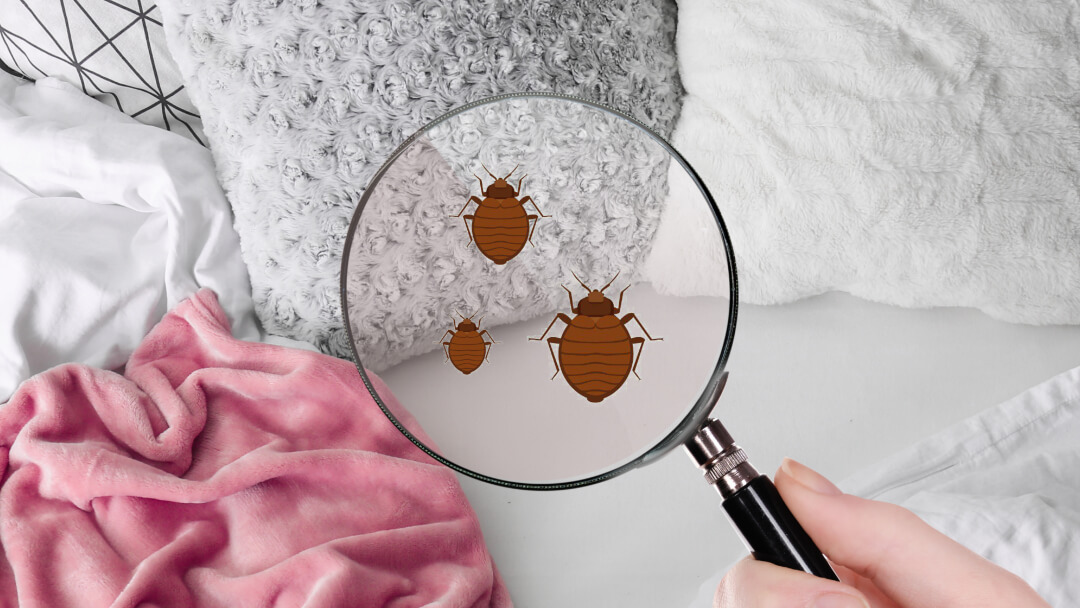Comprehending Different Treatment Choices for Bed Pest Control
In the world of parasite monitoring, bed pests present an one-of-a-kind obstacle that requires a tactical and well-balanced technique for reliable control. As we browse via the nuances of these therapy options, the crucial lies in choosing the most suitable technique that straightens with both efficacy and sustainability in bed bug control.

Chemical Therapies
Chemical therapies are a typical technique utilized in the expert control of bed insects. These treatments involve the application of pesticides to targeted locations where bed pests exist. Experts commonly make use of a mix of recurring insecticides, which remain effective for an extended period, and call pesticides, which act promptly to eliminate bed pests upon direct contact. The selection of insecticide and application method may vary depending upon the seriousness of the infestation, the kind of environment being dealt with, and any type of potential wellness worries for passengers.
When implementing chemical therapies for bed insect control, it is vital to comply with all safety standards and policies to minimize threats to humans, animals, and the setting. Expert parasite control operators are trained to pick the most ideal insecticides, use them efficiently, and take necessary precautions to avoid overexposure. Furthermore, correct tracking and follow-up examinations are necessary to assess the effectiveness of the therapy and ensure that all bed insects have actually been gotten rid of. When utilized deliberately and in combination with other control techniques., Chemical therapies can be an effective device in the comprehensive administration of bed pest invasions.
Heat Therapies

One of the key benefits of warm treatments is that they do not involve making use of chemicals, making them a preferred alternative for those concerned regarding chemical direct exposure. Additionally, warm therapies can be completed in a fairly brief duration, usually in a single day, decreasing interruption to the passengers of the treated space.
However, it is vital to get the services of qualified experts when choosing warm therapies, as improper use warmth can pose fire dangers and damages residential property. On the whole, warmth treatments represent a risk-free, efficient, and eco pleasant approach to combating bed bug infestations.
Natural Remedies
When seeking alternative approaches for bed bug control, natural treatments supply a you can try this out chemical-free approach that can be reliable in combating problems. These oils can be weakened and sprayed around bed structures, walls, and other areas where bed bugs could hide. While natural remedies can be effective, it's necessary to keep in mind that they might call for repeated applications and thoroughness to attain effective bed bug control.
Integrated Insect Management
Considering the diverse approaches offered for bed pest control, Integrated Pest Administration (IPM) stands out as a detailed technique that combines various tactics to properly address parasite infestations. IPM focuses on long-term avoidance and monitoring of parasites through a combination of techniques such as examination, treatment, and surveillance.
One trick facet of IPM is the focus on accurate recognition of the bug types and their details actions. By understanding the biology and practices of bed bugs, insect control professionals can develop targeted strategies to eradicate infestations. In addition, IPM advertises using non-chemical control techniques, such as securing gaps and cracks, vacuuming, heat therapies, and using bed mattress encasements.
Furthermore, IPM advocates for the judicious application of pesticides as a last resource, focusing on the use of low-toxicity products and incorporated strategies. Routine monitoring and follow-up evaluations are vital elements of IPM to guarantee the performance of the therapy and avoid reinfestations. Overall, Integrated Parasite Administration provides a alternative and sustainable technique to bed insect control, promoting environmentally liable techniques while properly managing pest populaces.
Expert Extermination Providers

Professional exterminators use a range of strategies to combat bed insect problems, including the application of pesticides, warmth therapies, vacuuming, and vapor therapies. They are furnished with the needed devices and devices to get to concealed locations where bed insects might live, such as splits, holes, and wall surface voids.
Furthermore, expert extermination services typically involve multiple brows through to find more information make sure that all bed pests and their eggs are entirely removed - bed bug treatment chicago services. This thorough approach aids stop reinfestations and guarantees long-term control of bed pests in the treated area
Additionally, pest control specialists can provide useful assistance on preparing the plagued area before therapy and offer referrals for stopping future bed bug problems. In general, professional elimination services supply a extensive and effective solution for managing bed insect problems.
Conclusion
To conclude, different therapy alternatives for bed bug control include chemical treatments, warm therapies, all-natural remedies, integrated bug monitoring, and specialist extermination services. Each choice has its very own benefits and constraints, so it is very important to carefully think about the certain scenarios of the problem prior to picking a therapy approach. Reliable bed pest control calls for a comprehensive approach that may include a combination of these treatment choices to effectively remove the invasion.
Chemical therapies can be an effective device in the thorough monitoring of bed bug invasions when utilized judiciously and in conjunction with other control approaches.
Utilized in professional bed bug control, warm therapies provide a non-chemical option for eradicating bed bug look at here invasions successfully. These oils can be thinned down and splashed around bed frames, baseboards, and various other areas where bed insects might hide.In conclusion, different therapy choices for bed pest control consist of chemical therapies, warmth therapies, all-natural remedies, integrated insect management, and professional elimination services. Effective bed pest control needs an extensive approach that might include a mix of these treatment options to effectively eliminate the infestation.